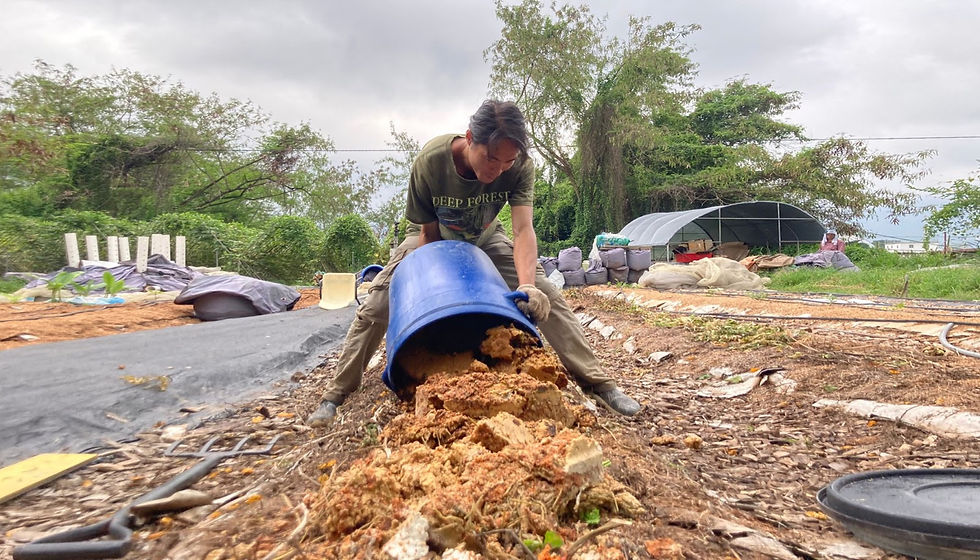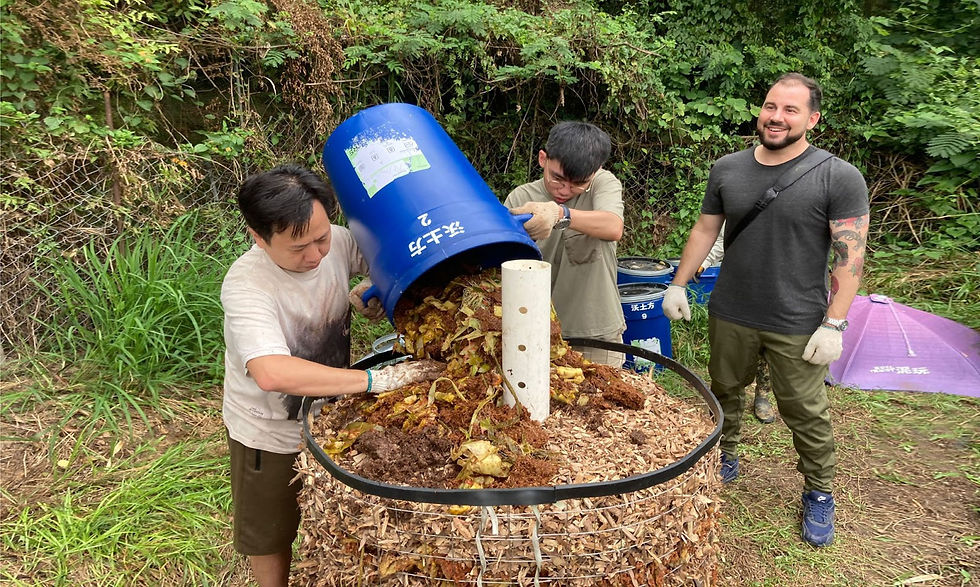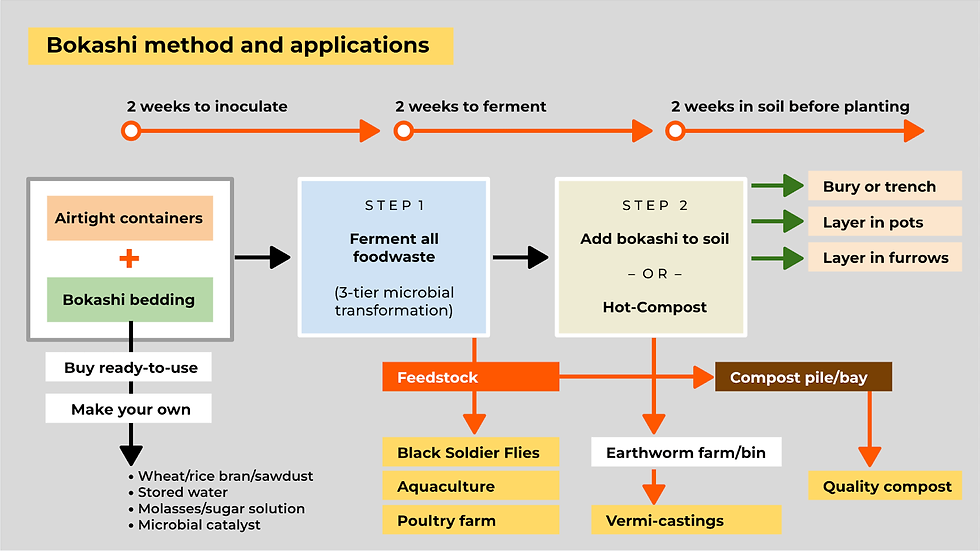
Working the bokashi-processed hotel foodwaste as topsoil-dressing into the field.
The farm management team behind SoilFeeders, Soil Trust (泥玩), continually explores new, regenerative ways for turning foodwastes from industry kitchens into a bioremediation tool for agricultural use. Depending on the context, farm type, and menu preferences of the industrial kitchen, bokashi-recovered organic material can be applied threefold: (1) as a direct soil amendment in crop cultivation or environmental bioremediation, (2) as hot-compost input toward readymade growing medium, and (3) as self-reliant feedstock for insect or animal breeding.
Bokashi as direct soil amendment: The regenerative farmer opening up a large, new planting bed (from pasture) can apply significant amounts of bokashi in trench burial (c100 cm wide and c70 cm deep) that are spaced two meters apart. Using a digger for excavation, bokashi is added, covered up with the dug-up topsoil, and sawed with a quick cover crop like soybean or comfrey. After 3 months, the bokashi completely disintegrates, and even clayish soil will become soft and crumbly. In extension, strategically applied trench burial over several years can effectively support the build-up of healthy soils in polluted landscapes or watersheds.
For ‘sprucing-up’ an existing planting bed, the SoilFeeders farm team first aerates the soil gently with a broadfork (to avoid tilling) and then applies bokashi either through topsoil dressing or through interstitial pipe-percolation. Between planting cycles, an inch-thick layer of bokashi can be evenly applied as topsoil dressing on the cleared field, which is covered with green waste and mulch before leaving it fallow. For the cultivated bed, the grower can also ram HDPE drain pipes (c10 cm diameter) about 25 cm into the ground and one meter apart before filling them with bokashi ferment. This way, the pre-composted organic material trickles down the soil with the help of precipitation without burning the roots of the crops. Alternative slow-release applications that SoilFeeders is exploring are the ‘lasagne method.’ Here bokashi ferment is sandwiched between layers of topsoil for inoculating it with beneficial soil microbes. Bokashi lasagne can be applied inside mulched furrows (between planting beds), in sling bags, planting pots, and in wooden pens. The pre-digested organic material will disintegrate into the topsoil within three weeks and round up the biome community with its lactobacilli and yeast.

Bokashi-processed food trimmings from the hotel kitchen mixed with wood mulch makes for formidable compost and biofertilizer.
Bokashi as hot-compost input: If the farmer has access to enough wood mulch and farm hands, bokashi can be upgraded into high-quality compost aimed at building the growing medium for the plant nursery or as top-dressing for the cultivated field.
Bokashi as feedstock: Due to its pathogen suppression, bokashi also makes for a versatile feedstock. Recently, entrepreneurial growers have trained their earthworms to feed and prosper entirely on a bokashi-based diet. Besides compost worms, such vermiculture also produces castings that are likely the most valuable biological soil amendment available to regenerative farmers. For breeding black soldier flies (BSF) bokashi feed reduces bad smells and foodborne pathogens. BSF larvae are priced as fodder in aquacultures, and BSF castings make veritable biofertilizer. For poultry farmers, bokashi can be a probiotic supplement feed.The versatile application of bokashi above and below the ground allows smallholder farmers to diversify their income streams. Larger-scale bokashi-powered operations create value chains, including (paid) foodwaste collection services for the local hospitality industry or community without the need for large equipment.

Bokashi is a pre-composting process for the long-term preservation of organic material applied as a direct soil amendment or feedstock in vermiculture, insect breeding, and livestock farming.
Keywords: Regenerative productivity, purpose-driven waste recovery, feedstock, above-ground-applications.
Related links:
Recycle Food Waste network by Green Thumb and Down To Earth Garden, NYC:


Comments